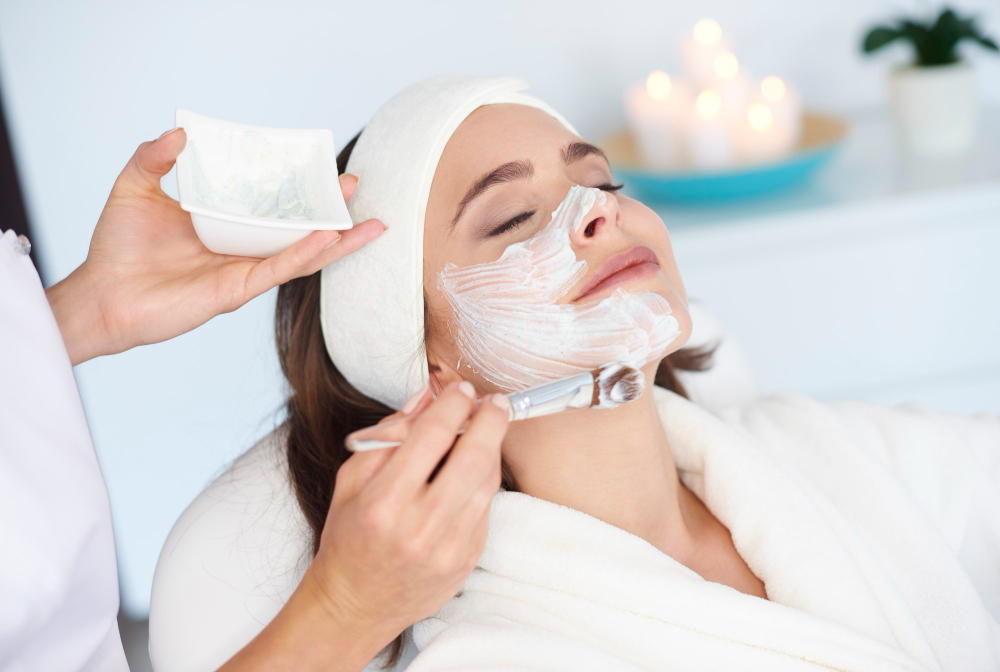Are you curious about how to get smoother, glowing skin? Chemical peeling might be the answer you’re looking for! This treatment is gaining popularity for its ability to enhance the skin’s appearance. The process involves applying a solution to the skin, which helps in removing dead cells and improving skin texture. But not all skin types are the same, and choosing the right peel is essential. Aligning specific peels with your unique skin characteristics and beauty goals can make all the difference in achieving that radiant look.
Demystifying Chemical Peels
Let’s uncover how chemical peeling treatment works to rejuvenate your skin’s texture and tone. A chemical peel uses a special solution to exfoliate and cleanse your skin layer by layer. This results in smoother and fresher-looking skin. There are three main peel types:
- Superficial Peels: These are the gentlest, offering light exfoliation.
- Medium Peels: These work a bit deeper, targeting dead skin cells.
- Deep Peels: These reach even deeper skin layers for more significant changes.
Knowing which type suits your skin can help in choosing the best peel.
Decoding Different Types of Chemical Peels
Light Peels
Light peels are perfect for a gentle touch. They use AHAs like glycolic acid and BHAs like salicylic acid. These are great for mild exfoliation and enhancing brightness. If you’re looking for minimal downtime and a refreshing glow, the light peel is an excellent start.
Medium Peels
For addressing pigment issues and fine wrinkles, medium peels can be the solution. Commonly using TCA and stronger AHAs, medium peels are slightly more intense. They take a bit more time for your skin to recover, but they’re effective in skin rejuvenation and reducing visible signs of aging.
Deep Peels
When it comes to more serious skin concerns, deep peels are recommended. These use phenol, which provides profound restoration. However, they involve significant downtime, as they penetrate deeply for impactful results. This makes them best suited for addressing deep scars and pronounced wrinkles.
Synchronizing Peels with Skin Types
Understanding your skin type is crucial when picking a chemical peel:
- Oily Skin: Salicylic acid-based BHA peels are ideal. They help reduce oiliness and improve acne-prone conditions.
- Dry/Sensitive Skin: Light AHAs, like lactic acid peels, offer gentle exfoliation without causing irritation.
- Combination Skin: A balanced approach with light to medium peels, depending on specific areas, works well.
- Normal Skin: You have the luxury of choosing most peels based on personal preference.
- Significant Skin Challenges: Deep peels, naturally, cater to more serious concerns and are better for lighter skin tones to avoid complications.
Selecting the appropriate peel helps address skin issues effectively.
Navigating Skin Tone Considerations
Your skin tone plays a vital role in deciding on the best chemical peeling approach. Those with darker skin tones should be careful, as peeling treatments carry a risk of hyperpigmentation. Understanding your Fitzpatrick skin type helps in identifying risks and rewards.
Recommendations:
- Opt for lighter peels to protect against post-procedure pigmentation.
- Consult with skincare professionals to ensure safe and effective treatments.
Benefits and Potential Risks of Chemical Peelings
Benefits:
- Smoother, brighter skin
- Reduced skin spots
- Improved appearance of fine lines and wrinkles
Regular Precautions:
- Temporary redness
- Mild flaking
- Short-term dryness
Deep Peels Considerations:
Deep peels might lead to scarring and pigmentation shifts, so proceed with care. Patch testing and consulting a dermatologist can help minimize risks.
Navigate the Chemical Peeling Process
Chemical peeling can be done either in-office by professionals or with at-home kits. The choice depends on your comfort and skin needs. Post-peel care is critical:
- Downtime Expectations: Light peels often involve minimal recovery, while deeper peels may take longer.
- Aftercare Essentials: Moisturize and avoid sun exposure to support healing.
- Recognize Complications: If redness or irritation persists, contact a professional.
Guide to Selection: Making the Right Choice
Before hopping onto any chemical peeling treatment, consider your skincare objectives.
- Checklist for Decision:
- Identify your skin type
- Note skin concerns (e.g., acne, pigmentation)
- Match peel type to your goals
- Consult a professional for medium or deep peels
Making informed decisions helps you achieve the best skin results safely and effectively. Always remember that working with a skincare expert maximizes both safety and effectiveness in your chosen approach to glowing skin.
Consult with the experts at Raneshwar Multispecialty Hospital today for personalized skincare solutions and achieve your glowing skin goals safely!




